


CAPSTONE DESIGN SHOWCASE 2021
-
DAYS
-
HOURS
-
MINUTES
-
SECONDS
COMING SOON





COMING SOON




Team members
Dhruv Mittal (EPD), Koh Yi Min Jason (EPD), Ng Chao Yong (EPD), Henry Lim Yu De (ESD), Wu Qi (ESD), Sabari Ganesan (ESD)
Instructors:
Wang Xingyin, Nagarajan Raghavan
Writing Instructors:
Nurul Wahidah Binte Mohd Tambee
Teaching Assistant:
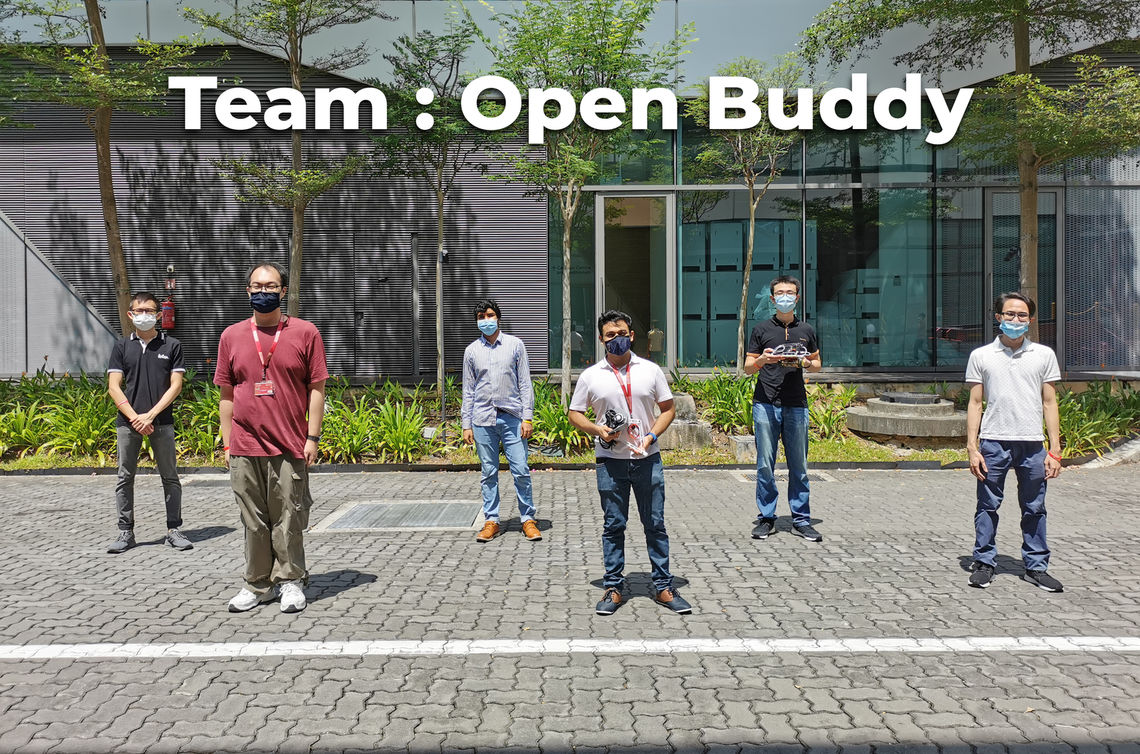

Despite the technological advent of Industry 4.0, there is a massive skill gap in the way humans control robots. Team Open Buddy worked with the Home Team Science & Technology Agency (HTX), a statutory board of the Ministry of Home Affairs, to advance robotics approaches for human machine interaction (HMI).
Singapore in 2021 faces an impending manpower crunch where labour needs to be divided between repetitive tasks and intellectually demanding tasks. Security Patrol force is one such example that can benefit from automation. Current security patrols in MRT stations are mentally demanding and carried out in groups for long hours. Team Open Buddy believes that the integration of a robotic solution with MRT patrol opens up the opportunity to enhance vigilance, decrease shifts and redistribute labour to where it is more intellectually requisite.
Quadruped robots have the ability to cross complex urban terrains and are therefore suitable platforms to carry sensors and observe the surroundings. However, a smooth and intuitive human-machine-interface (HMI) is crucial to control the robot without distracting the officer in a dynamic environment.
Open Buddy is a quadrupedal patrol companion coupled with a novel controller and a semi-autonomous stack to minimize the involvement of the security officer. The novelty arises from the fact that the robot can be commanded to move in context of its surroundings by simply pointing with the remote. I.e A machine is commanded to move to a location in human terms and otherwise follows the officer autonomously, like an invisible leash connecting the two together. It is at this intersection of manual and autonomous, simple and complex that the project thrives: the machine fades away into the background and emerges seamlessly when required.

The robotic controller is designed to have 3 modes of operation: Sit, Sentry, Pointing, and Patrol. Underneath the interface, lies a complex web of computations that need to be distributed between the robot, the controller, and the human. The following sections describe the implementation of each aspect and how it gives rise to each of the features of the Robot.

Buddy, the quadruped robot is developed to demonstrate the unique functionality of the HMI. It presents a huge opportunity to house sensors (such as cameras) necessary for security patrol as well as offset all of the HMI computations onto a powerful, onboard computer.
As a Quadrupedal Robot, Buddy is made from 4 leg subassemblies held together by a chassis. An inverse kinematic map is used to translate the angle of the motors to spatial orientation of the legs to a predefined gait, observed in the Minitaur. Hence, by tracking the motion of the motors in real time, a feedback loop can be used to control the level of compliance of the motors. A Jacobian is further developed to soften the motion accordingly and achieve stable walking. All of this is programmed into the microcontrollers of the robot.

[1] A creative auto belt centering mechanism is achieved by designing crowned spur gears instead of their simpler, cylindrical counterpart. This prevents belt slipping and sliding motion without adding any bulky belt tensioning components.
[3] On board Jetson Xavier and the RealSense cameras allow for quick real time processing and depth perception to activate the automation features. The onboard Infrared detection capability also allows detection of the pointing interface discussed below.
[2] Metal parts are waterjet, lathed and laser cut to be strong in flexure and tension. Sheet metal is bent in polygonal, U configurations to hold the shape of the robot purely by structure. FEA and Frequency analysis is done to ensure minimum deflection as well as high repeatability.
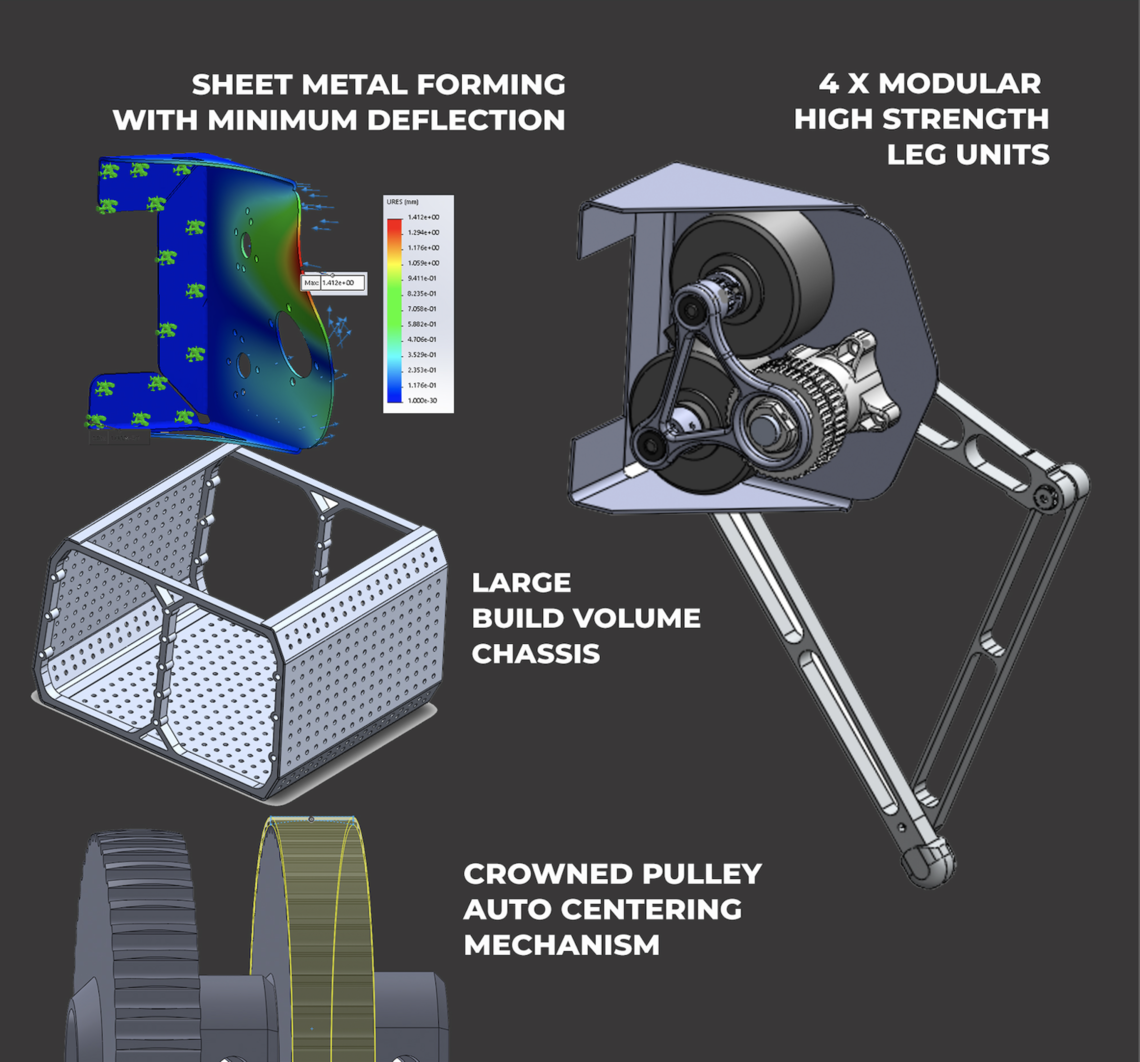
An ergonomic belt mounted remote control that is simple to use and inspired by the Nintendo Wii remote. Being a single handed remote, it primarily satisfies the user need of being simple to manage and non obstructive to the patrol. Corresponding to the three modes of Buddy, three textured buttons (Sit, Sentry and Patrol) are allocated each mode on the remote controller. In the Sentry mode, the remote produces a thin laser beam that can be pointed to a location and followed by the robot. Hence, the laser button is intuitively positioned under the index finger like a game trigger. In the Patrol mode, on board sensors communicate passively with the robot in real time to maintain a reliable connection. Lastly, a joystick and emergency stop is also added to allow a manual override of the motion of the robot if needed. Details on the modes:
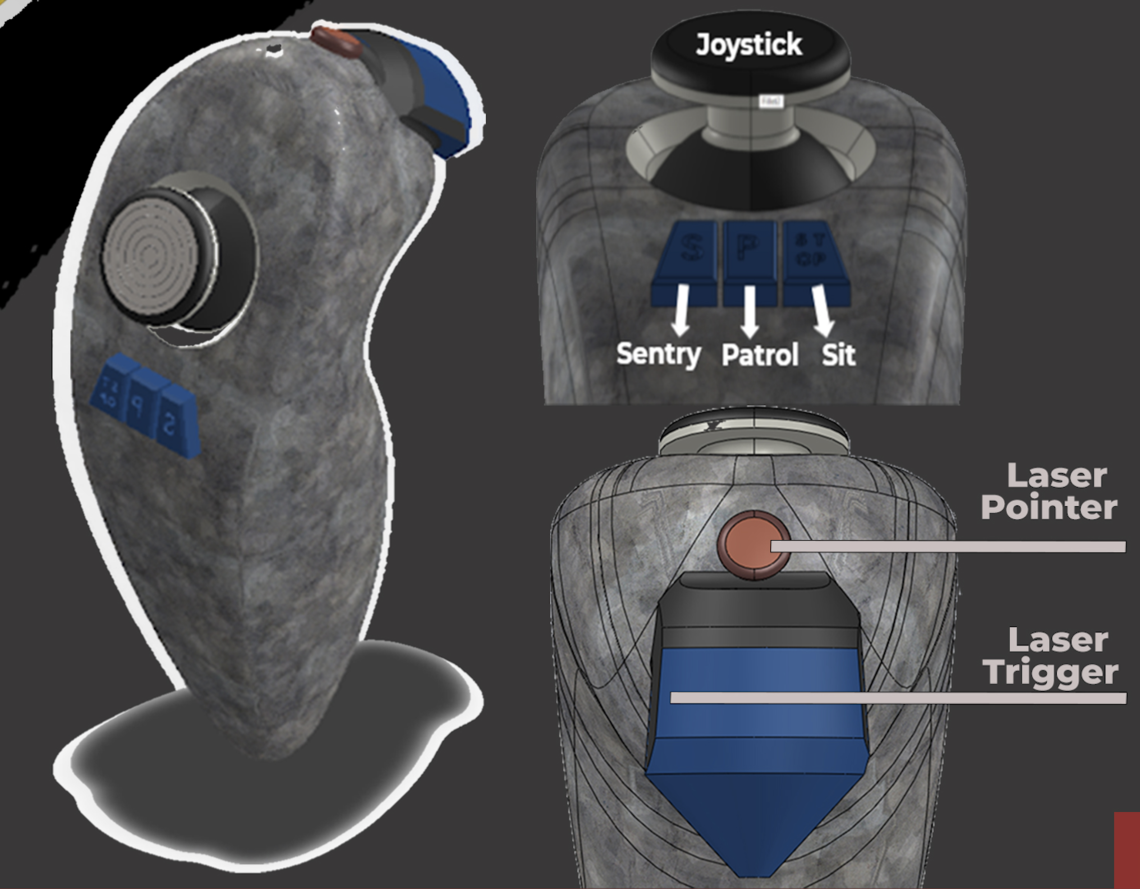
Sit mode is a passive cooldown mode used while resting, pausing, starting or stopping the robot. It enables the user to execute basic tests, configure settings or simply monitor the vitality of the robot.

Using a laser minimises computations and is therefore a lightweight and low energy.
The detection is done by filtering the Hue, Saturation and Value of the image to isolate the high emissivity of the laser beam.
This feature translates the simple action of pointing into the perception of the robot. When the user points with the remote, a discrete laser is projected onto the location and detected by Buddies onboard infrared camera. The robot then centers itself around this point.
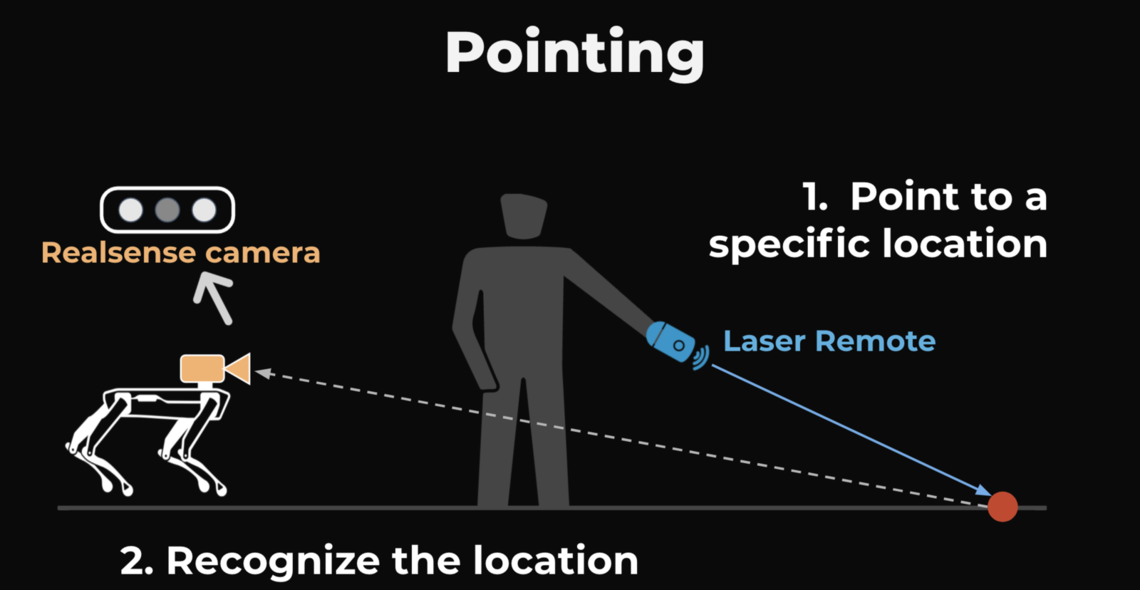
People Following is part of the client's objective to ensure that the robot does not interfere with the mission at hand. The robot must be autonomous, able to follow the user and keep a distance between itself and the user. Using a camera for the Sentry model above presents an opportunity to integrate deep learning and execute the following feature. An identifier (AprilTags) is hooked onto the belt of the officer and detected by the robot during movement.
Future developments seek the use of Ultrawideband (UWB) Sensors inside the remote and the robot to create a virtual link between the human and buddy.
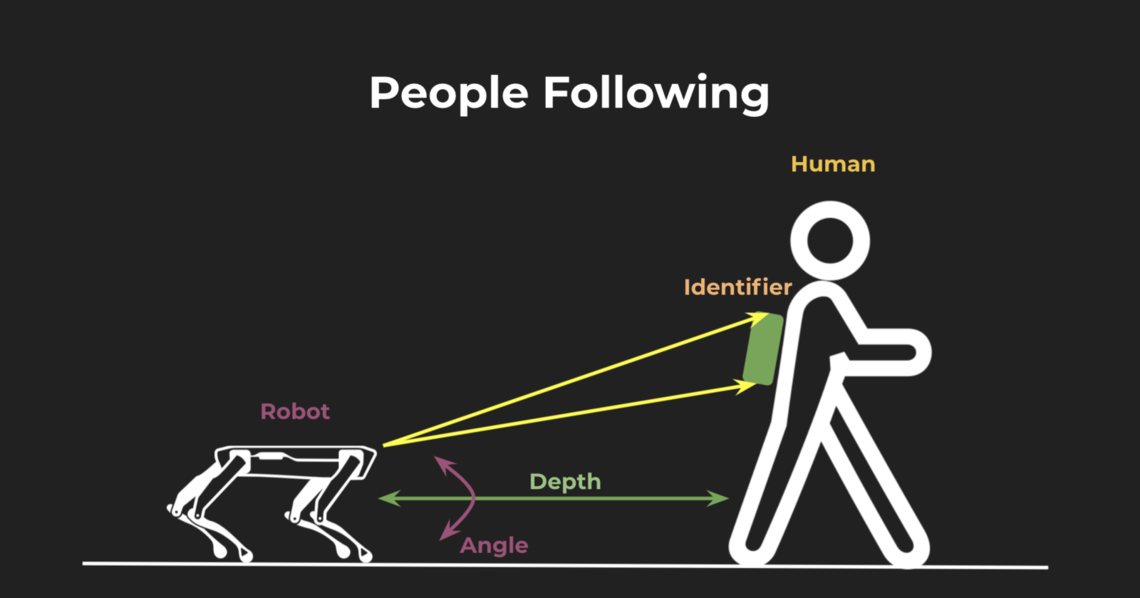
As a capstone project, Open Buddy is all but version 1 of where it needs to be. This is a small step in the right direction for Singapore’s progress towards industry 4.0 and a smarter city. In sight of the COVID 19 problem today, Open Buddy integrates manpower with smart distancing measures. Yet from a more abstract standpoint, Open Buddy is also a step in the right direction for an intuitive Human and Machine coexistence. We see and look forward to a time where robots will be as seamless as limbs and it has been a pleasure to work on this project.


HTX is the world’s first Science and Technology agency that integrates a diverse range of scientific and engineering capabilities to innovate and deliver transformative and operationally-ready solutions for homeland security. As a statutory board of the Ministry of Home Affairs and integral to the Home Team, HTX works at the forefront of science and technology to empower Singapore’s frontline of security. Our shared mission is to amplify, augment and accelerate the Home Team’s advantage and secure Singapore as the safest place on planet earth.

 Dhruv Mittal
Engineering Product Development
Dhruv Mittal
Engineering Product Development
 Koh Yi Min Jason
Engineering Product Development
Koh Yi Min Jason
Engineering Product Development
 Ng Chao Yong
Engineering Product Development
Ng Chao Yong
Engineering Product Development
 Henry Lim Yu De
Engineering Systems and Design
Henry Lim Yu De
Engineering Systems and Design
 Wu Qi
Engineering Systems and Design
Wu Qi
Engineering Systems and Design
 Sabari Ganesan
Engineering Systems and Design
Sabari Ganesan
Engineering Systems and Design

Dhruv Mittal
Engineering Product Development

Koh Yi Min Jason
Engineering Product Development

Ng Chao Yong
Engineering Product Development

Henry Lim Yu De
Engineering Systems and Design

Wu Qi
Engineering Systems and Design

Sabari Ganesan
Engineering Systems and Design
© 2021 SUTD

